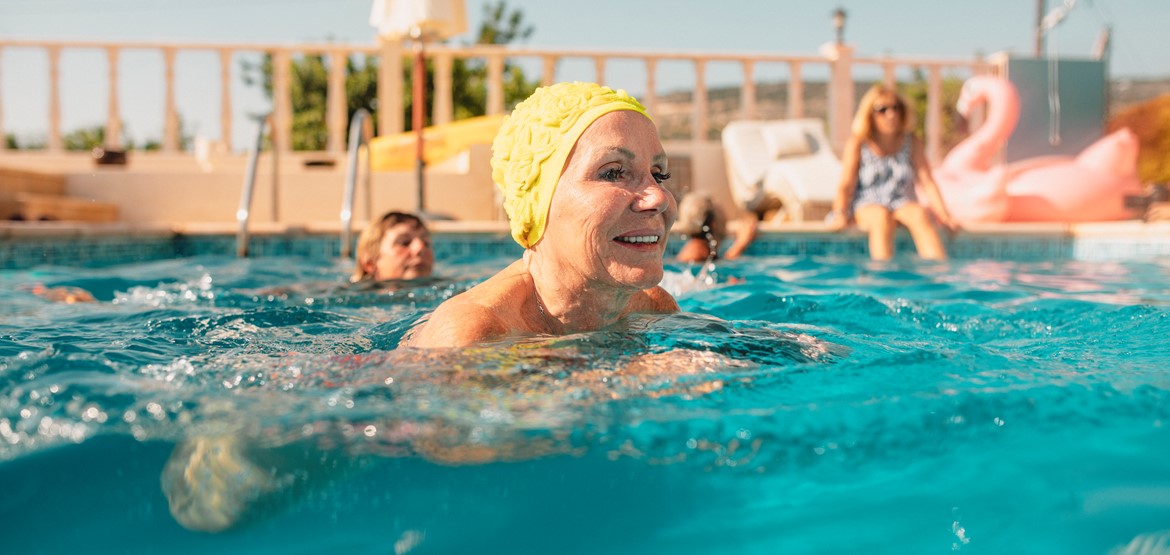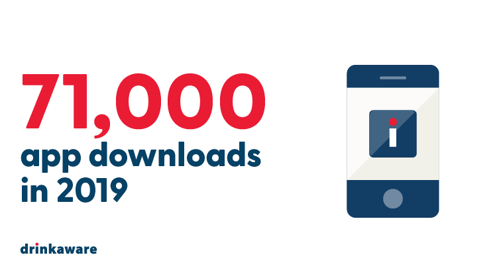How Drinkaware made a difference in 2019

Like students and teachers returning to classrooms up and down the country, we at Drinkaware have been busy assessing our own performance, what we learnt along the way and pinpointing what more we can do going forward to make an even greater impact.
Our latest impact report, which reviews the difference we made in the 12 months of 2019, marks the halfway point in an ambitious five-year strategy. It highlights how, as our understanding of drinking habits, motivations and occasions continued to grow, we sharpened our focus towards those who are drinking in harmful ways, the professionals who help them and friends and family around them.
As we know, alcohol misuse is a very complex area. Action must be taken on a number of fronts if we are to reduce alcohol-related mortality and ill-health. Which is why we use advertising, communications and community-based interventions to raise awareness, to engage people with our messages and to inform people of the serious health risks of regularly drinking more than the low risk drinking guidelines.
These efforts led to significant engagement, notably 9 million people came to the Drinkaware website in 2019 alone. Our tools were used more that 1.2 million times, and more than 12,500 people reached in communities and workplaces through Drinkaware’s initiatives and partnerships.
Given the unparalleled events of this year, Drinkaware is more aware than ever of the importance of the work it does as we look to the future. While we are yet to fully understand the extent of the impact of the Coronavirus pandemic on alcohol use, we are clear that the need to continue to reach those most at risk of harm is likely to be greater than ever.
How the Drinkaware app helped Jack stay on top of his drinking
Jack is a 62-year-old retiree, living in the East Midlands. Before his recent retirement, he worked as a self-employed builder, having spent most of his career in local government and the corporate world. Now retired, Jack tries to stay involved in the community through local associations and in the summer, has taken up beekeeping as a way to stay social.
Jack says he likes a drink but is now able to “keep on top of it”, in particular by using the Drinkaware app.
I do like alcohol, but I’m lucky enough that I’ve been able to stay on top of it for the last year, using the Drinkaware app.
He highlights two factors that contributed to his drinking creeping up: his children growing up and later, separating from his first wife.
Once the kids have left home, it’s easy to fall into having a drop of wine every night… kids keep you occupied when they’re young.
Though Jack has since remarried, the breakdown of his first marriage was also an important factor that led to Jack’s consumption increasing.
When we’d split up it was quite easy to have a couple of glasses in the evening, and then when I met my current wife…the first few years there’s quite a lot of drinking involved, that’s what you do when you meet someone new.
Despite generally feeling in control of his drinking at that time, Jack recalls a key wake up call, which triggered him to reflect on his consumption – a family member who died as a result of drinking too much. This event was even more shocking to Jack, because this person did not fit the profile of what he thought was a ‘stereotypical problem drinker’.
He didn’t recover, and you think – well actually, he was just a normal guy… underneath it you wouldn’t know, he kept his job down, but underneath it, he was killing himself. I just realised it’s an easy thing to slip into and very hard to step out of. It made me determined to be more on top of my drinking.
This was compounded by a growing dissatisfaction with the effect his drinking was having physically.
It really does slow you down the next day, if you’ve shared a bottle of wine, you’ll know about it the next day.
Jack’s online research initially led him to NHS materials and he soon came across and downloaded the Drinkaware app.
It’s quite shocking sometimes once you’re tracking how much you drink… [the app] helps you set targets, and when you click on a Drink Free Day, it feels very rewarding… I find it useful as a goal to achieve.
In terms of moderation techniques, Jack keeps a spirit measure in the house, keeps alcohol-free beers in the fridge and is comfortable opting for alcohol-free beers in the pub.
I had two [alcohol-free beers] last night in the pub and then drove home. There’s not really a stigma anymore, you’re not sitting there filling up on coke or lemonade… it’s easier to not be wedded to alcohol.
You can read the full 2019 impact report on the Drinkaware Website here
